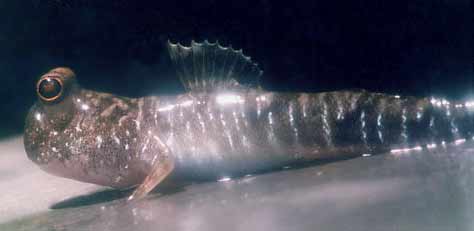Mudskippers are a strange type of fish – for starters, they’re amphibious, which means that they spend a great of their time on land. They also have unique adaptations which allow them to manage in the intertidal environments in the Indo-Pacific and the Atlantic coast of Africa. Their unusual feeding behavior has now been captured in high-speed and X-ray video by biologist Krijn Michel and his colleagues at the University of Antwerp, shedding new light on how life moved from the oceans onto the land.
Michel’s colleagues had previously shown that eel catfish (Channallabes apus) can successfully feed on land – but there’s a huge difference between feeding on land sometimes and actually living on land. Under water, fish can use ‘suction feeding’, that is gulping in water along with the prey. But on land, gulping and manipulating prey without a tongue and without water is a more difficult task.

To get around this problem mudskippers actually bring water in their mouths onland. The video shows how the fish approaches its prey and then water starts to protrude from its mouth, enveloping the prey. The fish basically uses the water in its mouth to manipulate the food.
“First it spews out the water, then very rapidly… it’s sucking the water back up again. They’re using the water that is in their mouth as a substitute for a tongue,” says Michel. The results were published on 18 March in the Proceedings of the Royal Society B.
Scientists had already known that mudskippers have several specific adaptations; they can, for example, use their fins to move around in a series of skips and flip their muscular bodies to catapult themselves up to 2 ft (60 cm) into the air, but this also shows how they adapted not only their bodies, but their habits – so much that they actually lost their underwater skills.
“They’re very good at feeding on land. We put the food there and within a fraction of a second it’s gone,” says Michel. “They’re remarkably bad at feeding underwater. They miss the food completely sometimes.”
Journal Reference: Nature, doi:10.1038/nature.2015.17123


